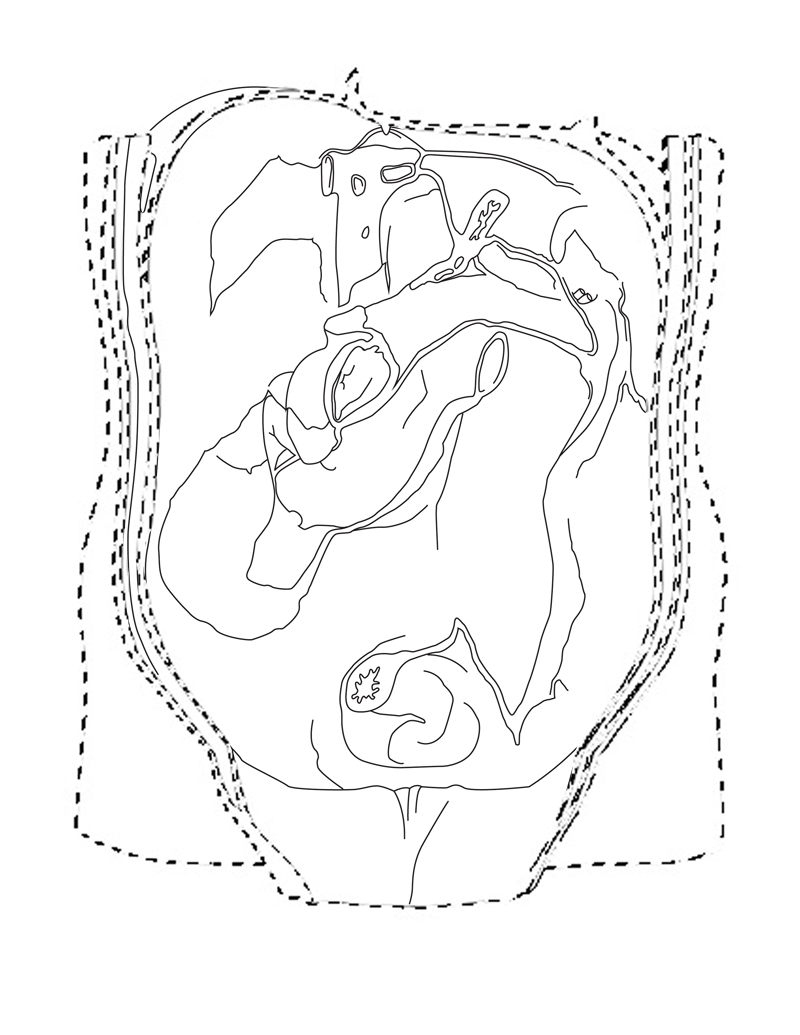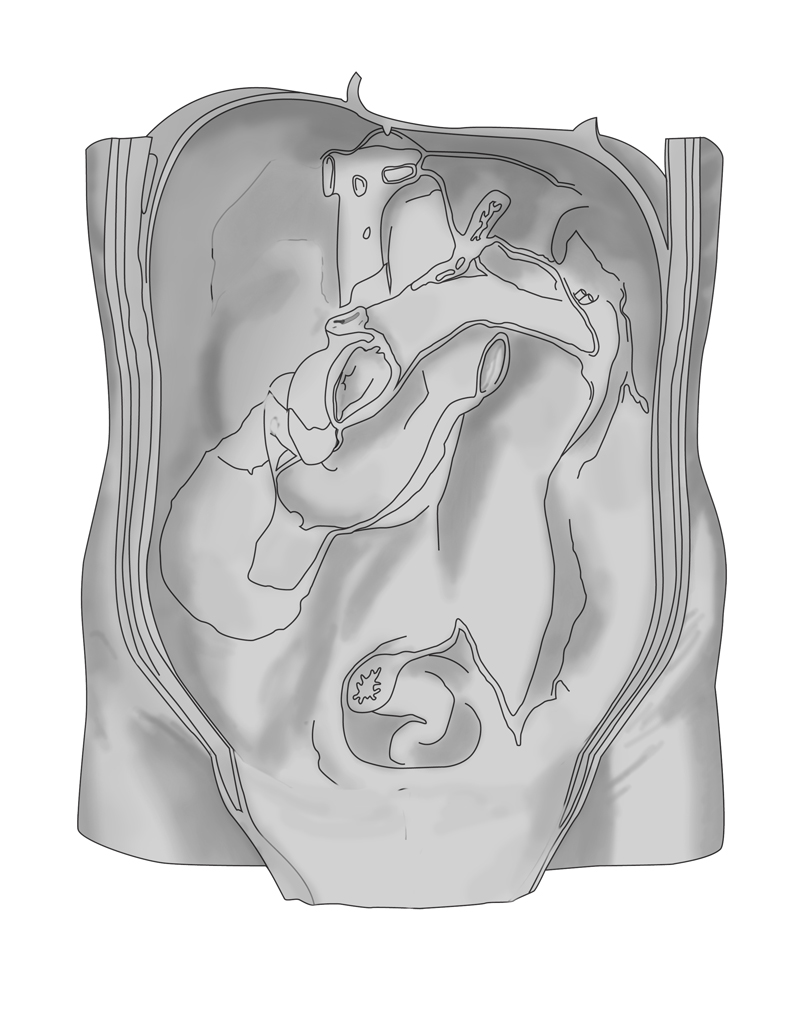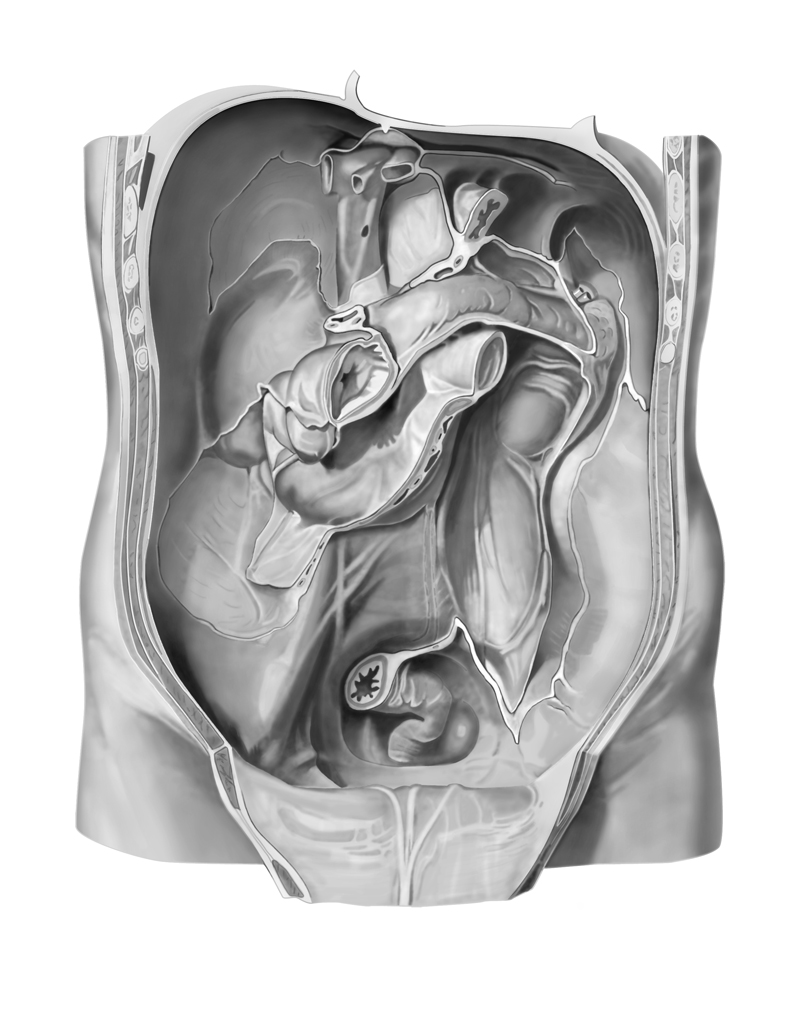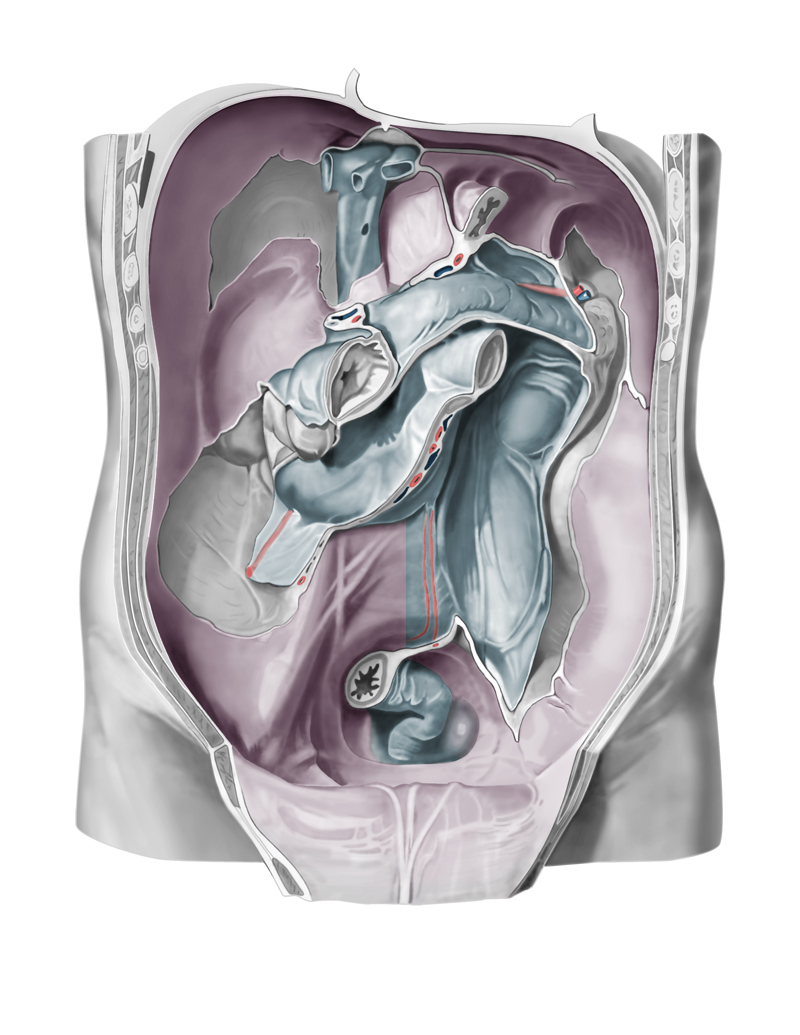
- Phone: 409.920.9280
- m.mediscuro@gmail.com

In the past, medical illustrators went through great lengths to create accurate drawings. Traditionally, artists created work on paper using techniques such as water color, pen and ink, airbrush, graphite, and carbon dust.
Illustration techniques have more recently evolved into a digital art form. From a professional standpoint, digital software has effectively improved accessibility and timely creation of accurate illustrations.
Always begin an illustration with by sketching. The final sketch will be the foundation for the final image. Here I am digitally repainting Posterior Abdominal Wall, after August Vierling, so I am using the original drawing as my foundation. I began by making an outline in Illustrator.

After bringing the outline into Photoshop, I start painting a flat, grayscale, bottom layer for the intial image. Working in layers allows me to easily edit what I have painted without having to start over from the beginning, which helps save time. Always remember to label the layers.

I then fully paint the image in Photoshop using a variety of tonal ranges, brush types, and brush sizes. I also took the initial lines out of the illustration.

Finally, when the grayscale painting is finished, I can add color. Now that this illustration is digital, I can save it as any file type at any size.

These are the underlying steps in creating a clean digital medical illustration. Other techniques I use for illustrating are vector line art, pencil sketch outlines, and pencil sketch cross hatching. Each technique may include varying amounts of tone, shading, and color. To see more of my illustrations, go to my portfolio and click on Illustration.